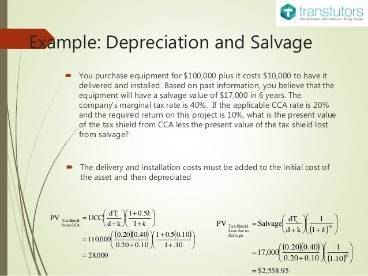Enacted in 1871, the Dictionary Act identifies the meanings of certain words found in federal law, unless the “context indicates otherwise.” According to the Dictionary Act, a “person . According to Justice Ginsburg, the context called for a different interpretation because, among other things, case law does not support the majority’s notion that a for-profit corporation can have free exercise rights. Nonetheless, according to the majority, because for-profit corporations can pursue “worthy objectives” like “costly pollution-control and energy conservation measures,” there is no reason they cannot also exercise religion. Nearly all of these corporations are owned by one or just a few shareholders, and their shares do not trade in public markets, with the result that they are considered “closely held.”47 These shareholders nonetheless enjoy limited liability and each firm is a separate legal person.
And of course, some of Hobby Lobby’s 13,000 workers will now need to pay for contraception. It is important in this case to examine each of these prongs separately. Several arguments presented to the Court attempt to establish that the government lacks a compelling interest to require the cost-free provision of medical contraceptives to employees who are provided health insurance. We think these arguments are wrong on the merits, in part because they are extremely broad and expansive in their implications. If the Court concludes that the government lacks a compelling interest in Hobby Lobby, many religious claimants might successfully challenge a very wide range of laws under RFRA. The role of religion in these and other corporations is not surprising.
- Hobby Lobby sued HHS, asserting that requiring them to pay for or provide abortifacients violated their First Amendment rights to freedom of religion and also violated the RFRA.
- Such one-family companies are a narrow slice of the IRS’ definition of closely held.
- Green and his family are fundamentalist Christians, and they operate the company with these beliefs.
[I]f there is any reading of RFRA and the Free Exercise Clause that raises disturbing implications, it is Justice Ginsburg’s. According to Justice Ginsburg, the Government can make any market for goods or services a Free-Exercise-Free Zone simply by the artifice of placing whatever obligations it wants on corporateentities rather than on natural persons. The rise of corporations, which developed more fully in the United States than in other industrializing nations, helped to make it the richest nation on earth. And economic historians have found that states where businesses could incorporate more easily tended to grow more quickly, aiding New York’s rise as a banking center and helping Pennsylvania’s coal industry to outstrip Virginia’s. The notion of corporate personhood still sounds weird, but we rely upon it constantly in our everyday lives.
The danger is not only that corporations can act at the expense of society, but also that the people who control them can act at the expense of their own shareholders, employees and customers. While the Hobby Lobby decision ostensibly addresses only a narrow set of circumstances — a corporation with relatively few owners, a religious objection to particular kinds of birth control — these sorts of limited rulings have a history of becoming more broadly cited as precedent over time. Also, the logic of this particular decision was so expansive and open-ended. “A corporation is simply a form of organization used by human beings to achieve desired ends,” Justice Samuel Alito wrote.
As explained in note 81, supra, we disclaim any reliance upon the business judgment rule to support this essay’s arguments. X, § 4 (exempting the entirety of an individual’s home, regardless of value, from the claims of creditors). Federal law similarly limits the ability of tort victims and other creditors to garnish wages, effectively conferring limited liability over exempt wages. See 15 U.S.C. § 1673(a) (2012) (limiting wage garnishment to twenty-five percent of disposable wages or the excess of disposable earnings above thirty times the Federal minimum hourly wage, whichever is less). 93 See Law Professors’ Brief, supra note 9, at 5 (limited liability encourages “entrepreneurial activity by founders, investment by passive investors, and risk taking by corporate managers”). The Supreme Court’s decision in June that some companies did not have to provide contraceptive coverage for their employees only started the debate.
Google Will Pay $700 Million To Settle Antitrust Suit—And Will Change Play Store Billing
There is simply no essence of corporateness that precludes shareholders with such prerogatives from employing for-profit corporations to exercise their religion. Last month, as you’ve probably heard, a closely divided Supreme Court ruled that corporations with religious owners cannot be required to pay for insurance coverage of contraception. The so-called Hobby Lobby decision, named for the chain of craft stores that brought the case, has been both praised and condemned for expanding religious rights and constraining Obamacare. But beneath the political implications, the ruling has significant economic undertones. It expands the right of corporations to be treated like people, part of a trend that may be contributing to the rise of economic inequality.
- “I’ve never seen data on how many closely held businesses there are out there,” says Paul Fronstin, a senior researcher with the Employee Benefit Research Institute.
- Will not often assert RFRA claims” [emphasis added], but it did not resolve whether publicly traded companies could assert such claims.
- And of course, some of Hobby Lobby’s 13,000 workers will now need to pay for contraception.
- Rather, the role of religion in generating trust suggests that religious businesses may survive precisely because religion solves economic problems.
And Sixth Circuits must apply Hobby Lobby and decide whether the closely held companies in those cases are also “persons” for purposes of RFRA, and therefore entitled under RFRA to opt out of the contraceptive coverage requirement. This essay argues that these scholars are mistaken.10 In the real world, shareholders impose religiously motivated policies on corporations all the time. This is no surprise, given a theory of the firm that emphasizes the contractual nature of corporate law. That law, in turn, empowers shareholders to unify corporate ownership and control and thus exercise the ordinary prerogatives of business ownership themselves.
America’s Largest Private Companies 2023: Cargill Stays On Top, SpaceX Debuts
The piling up of such experience, however, is only possible if the government gives the religious marketplace the kind of breathing room that it gives to the free-speech marketplace of ideas. One might still argue that religious for-profit corporations undermine the goals of corporate law. Indeed, I will not be surprised if we see, in the coming weeks, a host of closely held corporations – and a few publicly traded ones – asserting the right to discriminate against LGBT job applicants, employees, and customers notwithstanding various state laws to the contrary. And to that question, the quoted language cuts the opposite way. States create the corporate form and bestow its benefits on entities that agree to certain conditions.
The Faces of Medicaid Expansion: Filling Gaps in Coverage
Finally, the Hobby Lobby decision should stand as a reminder that while there may be differences of opinion about specific rules and requirements under the ACA, and some of those differences may be decided against the government, the law itself is not going away. Employers need to continue to monitor new developments and implement strategies for complying with the ACA. There was a rumor going around that all stores would be closing down permanently, but this is not true. The rumor started after a fake news website published an article claiming that Hobby Lobby was going out of business. The article was quickly debunked, and Hobby Lobby has confirmed that it is not going out of business. The couple had a passion for arts and crafts, and they were motivated to start their own business after becoming frustrated with the lack of selection and soaring prices at other craft stores.
Which Retailers Are Publicly Traded?
At the same time, Hobby Lobby employs over 20,000 employees, and the health insurance covers not just the employees but the employees’ family members too. So, the number of women who were potentially going to not have coverage for their contraception was very large. It is not yet clear how to identify exactly which companies are persons for the purposes of RFRA, and thereby permitted under the Court’s decision to refuse to cover contraception.
Hobby Lobby isn’t going out of business — at least not yet.
Several commentators and amici have argued that it will violate the Establishment Clause of the First Amendment if the Court rules in Hobby Lobby’s favor. They argue that the Establishment Clause https://accounting-services.net/hobby-lobby/ imposes a cap or limit on religious accommodations. An accommodation violates the Establishment Clause if it goes too far and imposes too heavy a burden on third parties or the general public.
The App Store As We Know It Is Dead, Thanks To Epic Games (And Europe)
At an Olathe, Kans., store, managers refused to allow an employee to bring her service dog, which was used to help her cope with symptoms of PTSD. The employee was then fired without the company attempting to provide a reasonable accommodation, the lawsuit said. Hobby Lobby, a store that sells craft supplies in nearly all 50 states, has been the source of numerous lawsuits since its founding.


